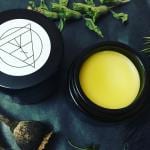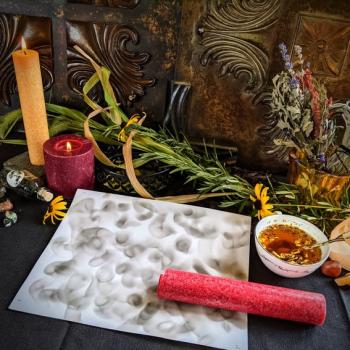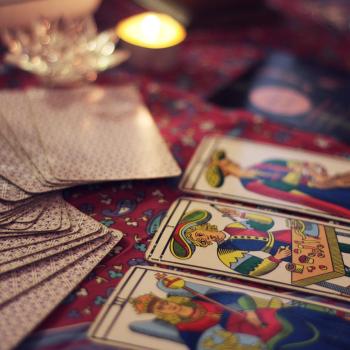Cultivating the Devil’s Apple aka Thornapple
I spent part of this afternoon harvesting my Thornapple plants. One of them grew to be close to five feet high! The Thornapple I grew this year is a Datura stramonium var. tatula; similar to the common Datura stramonium only it is less shrubby and has lavender purple flowers. I harvested leaves, seed pods and stems. I have a few workshops coming up over Samhain season on different aspects of the Poison Path and like to have the actual plants on hand for any one interested in working with them. Part of my bargain with said plants is to make them available to others and teach people how to use them. All parts of the plant are going to be put to various uses. The leaves are dried and used for spirit offerings, intense personal cleansing and as spell ingredients. The stems, when dried become hard and woody making them great for wands, working tools and ritual fetishes. Of course the seeds are spread around for others to grow and I will also be using some to make oil infusions. The pods, I incorporate into various herbal amulets and also fill with herbs, and seal them with wax to created a loaded jack ball type charm. It is amazing all of the diverse uses that can be discovered when working with just a single herb.
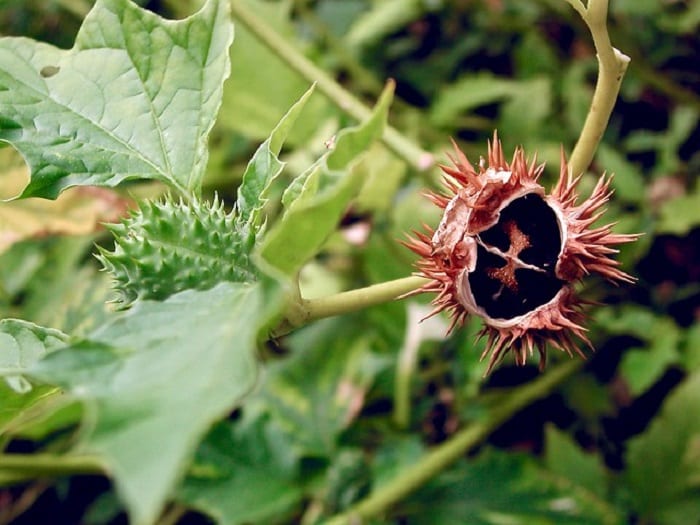
While spending time harvesting the Thornapple, making it offerings and being pricked by its spines (which usually leaves me itching for a while); I received new insights and inspiration in regards to working with the plant in magic. Appropriately, I am also taking Harold Roth’s Six Baneful Herbs class online. The first plant that was discussed was Thornapple. This discussion really got me thinking about the nature of this plant, in particular its spirit. So far I am loving Harold’s class, and look forward to the next few weeks to come! He will be offering the class in the future, and more information can be found on his website Alchemy Works.
The Non-Binary Nature of Plants Spirits
In some ways plants are like humans. Their moods and behaviors changed from day to day, and are often influenced by external factors. Plant spirits are also very non-human, and trying to describe them in human terms often leaves one with the feeling of chasing smoke. To say that a plant is primarily masculine or feminine based on its characteristics is one example of this losing battle; while herbs may exhibit some characteristics that could be described as one or the other this is largely a human construct. Plant spirits are vast and do not fit into human terms. Even physically many plants have parts that are both male and female. When it comes to Datura I have heard it being described as very masculine, aggressive and temperamental. However, I have also seen it described in terms that are considered more feminine. For example because of its vespertine nature it is associated with the Moon, psychic ability, intution and the sub-conscious-all things that are ruled by more feminine energies.
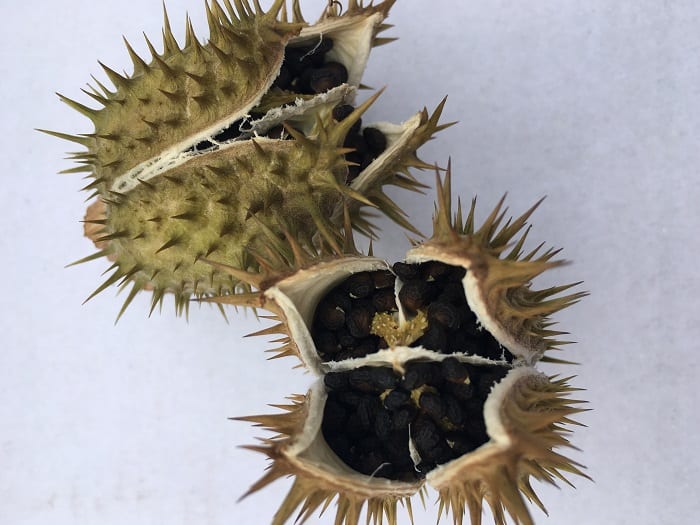
While some plants are undeniably more fiery and active in their action and others are more watery and passive; I have found that the majority of plants particularly those associated with spirituality and expanding consciousness disrupt the whole gender paradigm. After exploring these plants on a spiritual, energetic and symbolic level for many years I have come to the conclusion they they contain both energies and are defined by neither.
Thornapple as an example, at first glance it appears to be a very masculine plant. The Stramonium variety has deeply serrated-spiny leaves, and the thorns on its seed pods are very sharp and erect. When ingested it often causes agressive behavior, mood swings and paranoia. On the other hand Thornapple is used as a sedative, a pain reliever and to soothe exhaustion. Varieties like Datura inoxia have soft-ovate leaves of a dark lush green. Considering the herb’s esoteric characteristics we are looking at a plant that displays both martial and lunar aspects, while technically being a Saturnian plant. One of the defining characteristics of Saturn, as seen in the Roman festival of Saturnalia is an inversion of social norms. Binary gender is a social norm that is currently undergoing a rapid deconstruction.
Considering this, while Thornapple does have these characteristics they can all be applied to the opposite gender that they would initially be associated with. The martial characteristics, for me, bring to mind the Valkyrie, the shield maiden, the Amazonian warrior and Celtic chieftain; all roles filled by women. On the other hand, I see the wounded-healer, the two-souled shaman, the trickster and the androgynous gods of light and art. The outdated gender binary is undergoing a Saturnian entropy, a static paradigm being broken down and reborn into something more reflective of our spiritual natures.
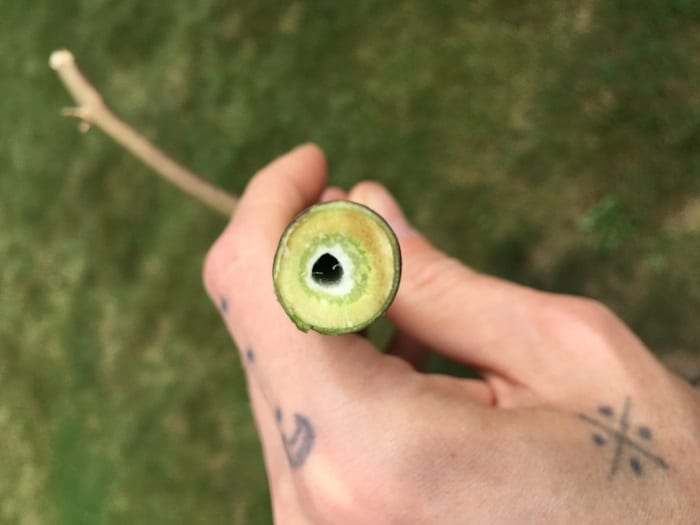
Magical Applications and Physical Characteristics
Thornapple has been used in rites of passage by indigenous Americans for centuries. It is a plant, with the exception of a couple of varieties that is native to the Americas. Its application as a catalyst for these liminal rites and its role as a gatekeeper to esoteric wisdom make it a powerful ally for aiding transitions, for letting go and for healing the trauma of the past. I just recently recommended it to a lady who was dealing with anger and other emotional issues related to ancestral trauma. I think of Thornapple as a “spirit food herb” like tobacco or sweetgrass. As such I feel like it is a good offering to appease the spirits, while also utilizing its ability to bring catharsis or intense healing. When taken hometopathically Thornapple (Stramonium) helps to over come fears, anxiety, anger and agression.
Interestingly, Thornapple also has some applications in love magic. It is a little more coercive, seductive and lusty than some of the more demure and gentle love herbs. One insight that I’ve had recently is that the seed pods, when empty have four chambers. The same number of chambers that are in the human heart. This sympathetic connection can be explored in love magic, and also used in rituals to protect ones heart. In the same way the pods could be used in general protection magic, they could be tailored to protect an individual more specifically their heart or emotions through this sympathetic connection.
Like many of the visionary herbs used in otherworld travel and spirit flight, Thornapple has hollow stems. These are thought to represent the avenues upon which the spirit travels when in flight. Plant “straws” have been used for blowing sacred smoke and powder, and also for the insuffhilation of entheogenic herbs a teachnique calle rapé. Some practitioners may also visualise themselves traveling through these tiny passage ways to connect with the plant on a deeper level or access the chthonic realms to bring back wisdom or plant medicine.
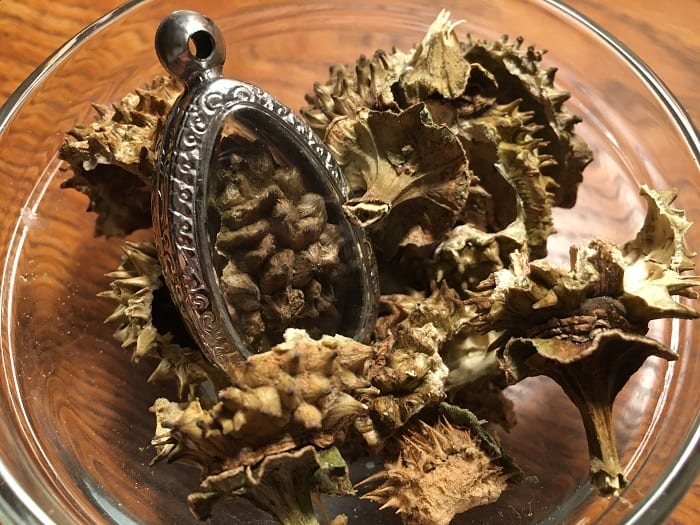
Conclusion
In short, these plants have so much to teach us. I really believe that there is no end to their wisdom. Even after years of working with specific plants they continue to share new things about themselves and how we can better partner with them to make positive changes within ourselves and within the world around us. If you want to read more about Thornapple or Datura in general I have another article here.


